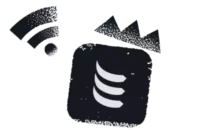What is a Webhook?
A webhook is a mechanism that allows two applications or systems to communicate with each other in real-time. It is a way for one application to provide automatic updates or notifications to another application whenever a specific event or trigger occurs.
In the context of web development, a webhook is typically implemented as an HTTP callback, where an application sends a POST request to a specific URL endpoint (provided by the receiving application) whenever a particular event takes place. The receiving application then processes the incoming request and performs the necessary actions based on the provided data.
What are webhook used for?
Webhooks are commonly used in various scenarios, such as:
Notifications: Webhooks enable applications to send real-time notifications to other systems or services. For example, a messaging app can use webhooks to notify external systems about new messages or updates.
Integrations: Webhooks facilitate the integration of different applications or services. For instance, an e-commerce platform might use webhooks to inform a shipping service about new orders for immediate processing.
Automation: Webhooks can trigger automated actions or workflows. For example, a project management tool can use webhooks to automatically create tasks or update project statuses based on events in external systems.
Data synchronization: Webhooks can be utilized to keep multiple systems or databases in sync. When data changes in one application, a webhook can notify other systems to update their records accordingly.
Webhooks provide a flexible and efficient way for applications to communicate and synchronize information in real-time, allowing for streamlined workflows, faster response times, and improved system integration.
How do Webhooks work?
Webhooks work by establishing a communication channel between two applications or systems. The process typically involves the following steps:
Setup: The application that will receive the webhook (referred to as the “listener” or “webhook endpoint”) provides a unique URL or endpoint to the sending application (referred to as the “sender” or “webhook source”). This URL acts as a target for the sender to send HTTP POST requests containing relevant data.
Event or Trigger: The sender application defines a specific event or trigger that will initiate the webhook. This event could be anything from a new order being placed to a user subscribing to a service. The sender application keeps track of these events and determines when to send webhook notifications.
Notification: When the predefined event occurs, the sender application generates a payload containing relevant data related to the event. The payload could include information such as event type, data changes, or additional context. The sender then constructs an HTTP POST request with the payload and sends it to the webhook endpoint URL provided by the listener.
Receiving and Processing: The listener application receives the HTTP POST request containing the payload at the webhook endpoint URL. It processes the incoming request, extracts the payload data, and performs the necessary actions or operations based on the received information. This could include updating a database, triggering a workflow, sending notifications, or any other desired behavior.
Response: After the listener application processes the payload, it typically sends an acknowledgment or response back to the sender application. This response can confirm the successful receipt and processing of the webhook, allowing the sender to know that the notification was received and handled properly.
Webhooks provide a real-time communication mechanism between applications, enabling seamless integration and automation. They eliminate the need for constant polling or manual data synchronization, as the sender application proactively notifies the listener whenever a relevant event occurs. This allows for faster data updates, improved system coordination, and more efficient workflows.
What is the difference between API and webhook?
APIs are generally request-based, allowing clients to interact with server applications as needed, while webhooks are event-driven, enabling real-time notifications and updates from sender applications to receiver applications without the need for polling.
